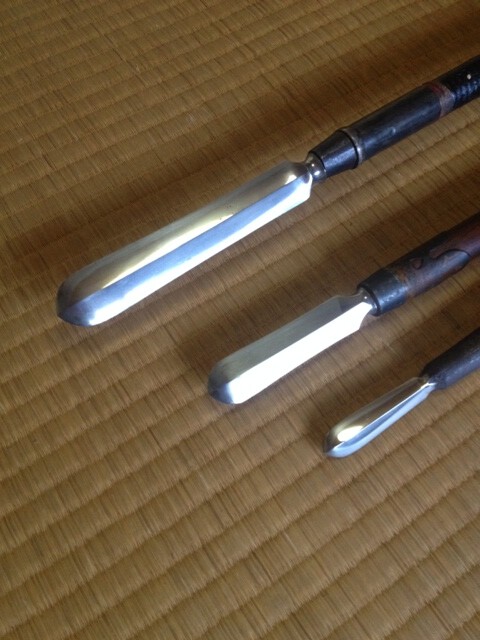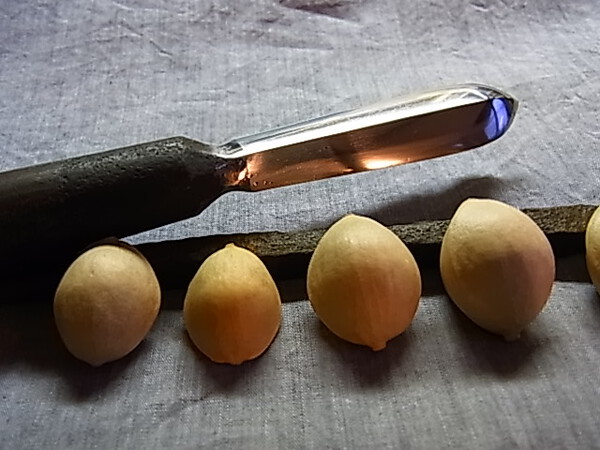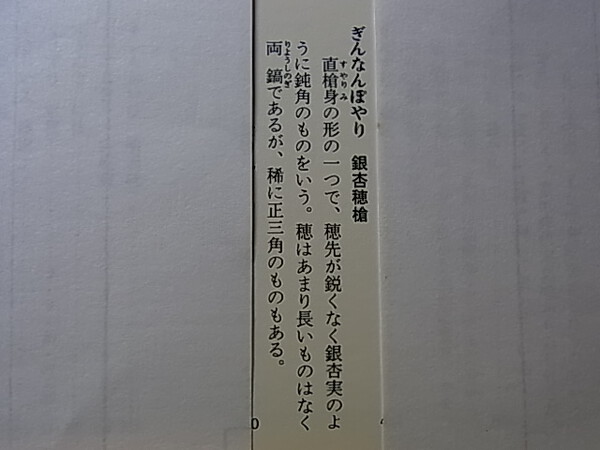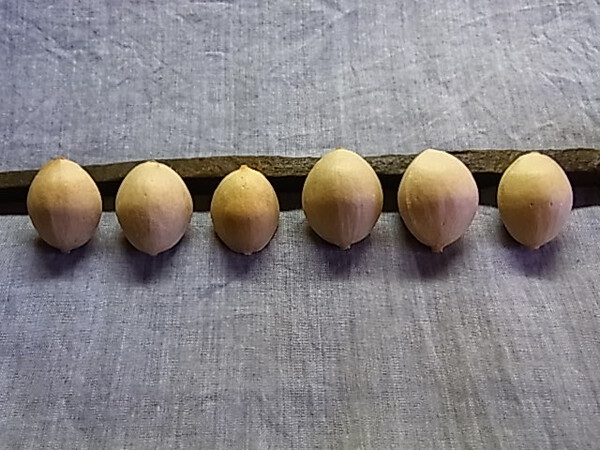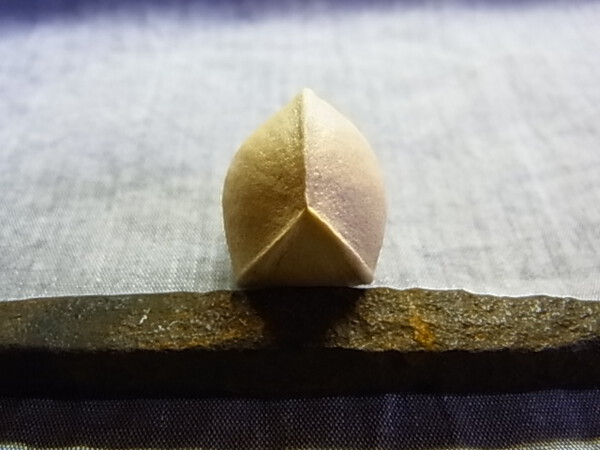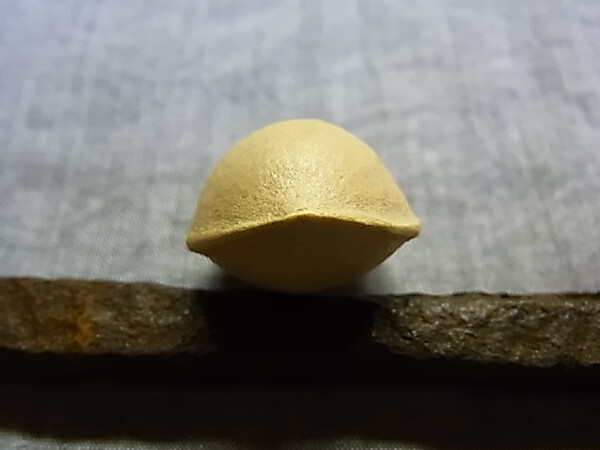-
Posts
13,793 -
Joined
-
Last visited
-
Days Won
250
Content Type
Profiles
Forums
Events
Store
Downloads
Gallery
Everything posted by Bugyotsuji
-
Since you do not give the price, it is hard to judge whether it was reasonable or not. Now if you gave us a series of prices to compare it against, say a) 10,000 USD, b) 1,000 USD, c) 100 USD, d) 10 USD etc., then that would give us a series of yardsticks!
-
I'm convinced! Just putting out a few feelers as to possible costing...
-
Eric, how does that work? Ken, yes, I agree, very tempting, but would you attempt that yourself?
-
The hollow pin would have been a refinement around the time when they were experimenting with ways to fit a shroud for firing in rainy weather. Nagashino comes to mind. Certainly until then there is no reason for the hinge pins to have been hollow. From then on they would have become fashionable, in fact probably de rigueur. I have an early pistol with a solid brass pin which looks lovingly handmade, unassuming and original. The top is hollowed out though to form a bowl where you might expect a dome. I can imagine that fitting an umbrella box to a long gun was just within the realms of practical, but in the case of a cavalry pistol it would surely be just too dang complicated to fit the burning match and try to open the pan inside such a box while seated on a horse. In the case of pistols my guess is that hollow pins were in reality a decorative option rather than a functional necessity. As to Peter's collection above, it does sound as though most have been replaced by someone at some point unable to get the perfect pin, but needing something to hold the pan in place. Dropped at the wrong angle with the lid open, the pins may have crumpled or sheared easily. (Many guns have lost their pan completely. The easiest way not to lose a pan lid is to fit it back on with whatever is to hand.)
-
Hello Malcolm, yes, I am sure he has a picture in his mind, but he (or his computer) chose the wrong Kanji to express it, I am guessing. Written that way it can be a ring of fern cells in botany, or a ring around a worm's sexual organs... (?) OK, thanks Malcolm, I have found it. An archaeological term for rings on old Chinese pots etc. Google search for pics of 環帯 https://www.google.com/search?q=%E7%92% ... 5#imgdii=_
-
Justin, while following your brave attempts to make a suitable brass ring to slip over and fasten the barrel to the stock, I decided to go back to the literature to find out what the 'correct' word might be in Japanese. Do/dou/doh (like in donut) 胴 means body, and Kane/gane 金 means metalwork; these together seem to be short for the proper term 台締金 Dai-shime-gane. (Dai 台 is stock) Sawada Taira seems to be the most authoritative in this area, but trawling through his book I came up with no less than five different expressions. These can be explained in different ways, but the easiest way out I noticed was for him to use the imported word バンド (band) which has a multitude of convenient uses in Japanese today, including belt to hold up one's pants/slacks/trousers. He uses the word Do-rin 胴輪 several times, which has a Buddhist 'ring' (pun intended, the pun works in Japanese too) to it. He often uses the word Kantai 環帯 but my electronic dictionary and Google searches fail to come up with such a meaning to this compound word. In conversation you will hear people refer to it as Wakka ワッカ 輪っか which is a convenient slang word for something ring-shaped. In an illustration on p. 103 of his book of the 'correct' terminology for the parts of a Seki-Ryu gun, these bands are referred to as Do-rin, and in brackets "Dai-shime-gane, made of copper".
-
Wow, that is special. To make it stand up to numerous openings and closings without becoming loose, he chose to make that piece out of very hard walnut.
-
Could it have been in a fire?
-
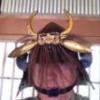
IMPORTANT FURTHER RESEARCH INTO TANEGASHIMA PISTOL
Bugyotsuji replied to watsonmil's topic in Tanegashima / Teppo / Hinawajū
A rather unusual gunmetal (Hokin) barrel with iron Bisen screw. Pan and barrel in nice condition. May I add that I was surprised by the shop's elaborate line about why the gun was Mumei. Many guns are, and being unsigned is not particularly unusual or even detrimental. Just nicer to have a Mei. Giving an excuse like that suggests that they feel it really should have been signed and perhaps when asked by a customer they came up with some nonsense about prohibition in order to make the sale. On the other hand there may be something behind what they say, or it may be something to do with the bronze material and the ability to cast extras. I will make a point to ask around. -
Moriyama San, is it possible that the blade was ordered by somebody else, and that Nishimura Masamichi made it? (There are three smiths signing 正路 listed in the 日本刀銘鑑 for example.)
-
None of them quite have the right strokes, but while we are thinking creatively, just as likely as 申 神 must surely be the two-water-stroke hen version of 沖 with the missing stroke brought over to the right?
-

Sasa-ho, Sasa-no-ho Yari
Bugyotsuji replied to Bugyotsuji's topic in General Nihonto Related Discussion
At your service, kind Doctor. -
Just out of curiosity, I asked the wife if she had any Gingko/Ginkgo nuts in their shells and not only did she have some, but they were in good condition, and even better still, there was a surprising variety among them. What I discovered while taking the following shots was that the nut shells have a rim on them, which could equate to the edge of a spear blade, I suppose. The second discovery was that the end-on/cross-section profiles can be quite different as you may see in the illustrations. Sasama says in his encyclopedia of J arms that Gingko nut spears do not have a sharp tip but are 'donkaku' 鈍角 ie, they end at an 'obtuse' angle. He also says they tend to be Ryo-shinogi, though you do occasionally get a triangular, true Sankaku 正三角. Now one of the nuts below approaches Sankaku! Those yari kaji must have been very aware of the shapes of Gingko nuts when fashioning their blades. I dragged out two more Yari that have been around for several years here which seem to fit the 'Gin-nan-po/ho' pattern, one very small, the other quite large, indeed testing the upper limits I would guess. Both Mumei, the longer one registered in Kyoto.
-

Sasa-ho, Sasa-no-ho Yari
Bugyotsuji replied to Bugyotsuji's topic in General Nihonto Related Discussion
Good, Hoanh, I am glad you enjoyed it. The leaf caught my eye and gave me a flash of insipiration. Something here to amuse the NMB members, I thought. :lol: -

Sasa-ho, Sasa-no-ho Yari
Bugyotsuji replied to Bugyotsuji's topic in General Nihonto Related Discussion
Oh, and the Yari itself is Mumei, but papered to Munemitsu of Sue Bizen. Reunited after 400 years, neither has changed much. -

Sasa-ho, Sasa-no-ho Yari
Bugyotsuji replied to Bugyotsuji's topic in General Nihonto Related Discussion
Oops, somehow they loaded in the wrong order. Here is Sasama San's description in Japanese clarifying the difference between the usage of SasaHo and Sasa no Ha. Ho is often used to describe the Yari-Mi or blade of a Yari. -
Just sitting here idly watching the wind through the bamboos when I saw a single Sasa leaf caught trembling. It reminded me of a spear I have had for many years, and it was as if nature itself was waving the leaf at an unseen enemy. Talk about themes from Japanese Nature! The Ho in Sasaho 笹穂 means pointed head or ear as in a cereal, but in the description of Sasaho, Sasama says the word indicates a spear like a Sasa-no-Ha 笹の葉, or the leaf of a low-lying bamboo grass. Pic 1, second from left. Pic 2, (see following post) how Sasama San describes SasaHo Yari. Pics 3~ the leaves and the spear in the garden.
-
Not as clearly defined as recent Western auction houses Malcolm, but it leaves open the possibility that the Mei may have been added later for whatever reason. It simply notes that it bears a signature reading "Nishijin Ju Umetada", without wishing to get into any authentication process. Which, come to think about it, is a little surprising, considering that swords will fail automatically if there is any doubt regarding authenticity of Mei, regardless of what should be the most important thing, the blade itself.
-
Renato, the thick writing above simply describes the koshirae saya. The three lines below describe the Fuchi/kashira, the Menuki, and the Tsuba. Are you wanting to see if the writing corresponds exactly to the article?
-

How to Make : Tanegashima Pan Cover Hollow Pin
Bugyotsuji replied to watsonmil's topic in Tanegashima / Teppo / Hinawajū
Full of admiration. I know from experience how satisfying it is to create such things by hand. To write it up must have been another labor/labour of love, though. Such a small thing, but so important in my mind too. I remember buying my second Tanegashima, a lovely 6 Monme Hino gun, and feeling disappointed that the pan hinge-pin looked wrong. Almost as an afterthought I asked the Banto of the shop about it. He pulled an old one out of a different HInawa Ju he had for sale and stuck it in mine, perhaps hoping that the next customer would not mind. Regardless of his motivation, I felt such relief that a seemingly impossible hurdle had just been removed so easily. Only for the purist!


